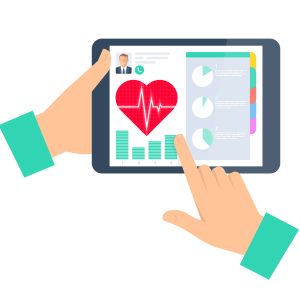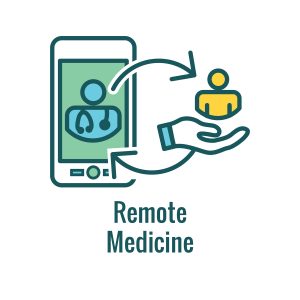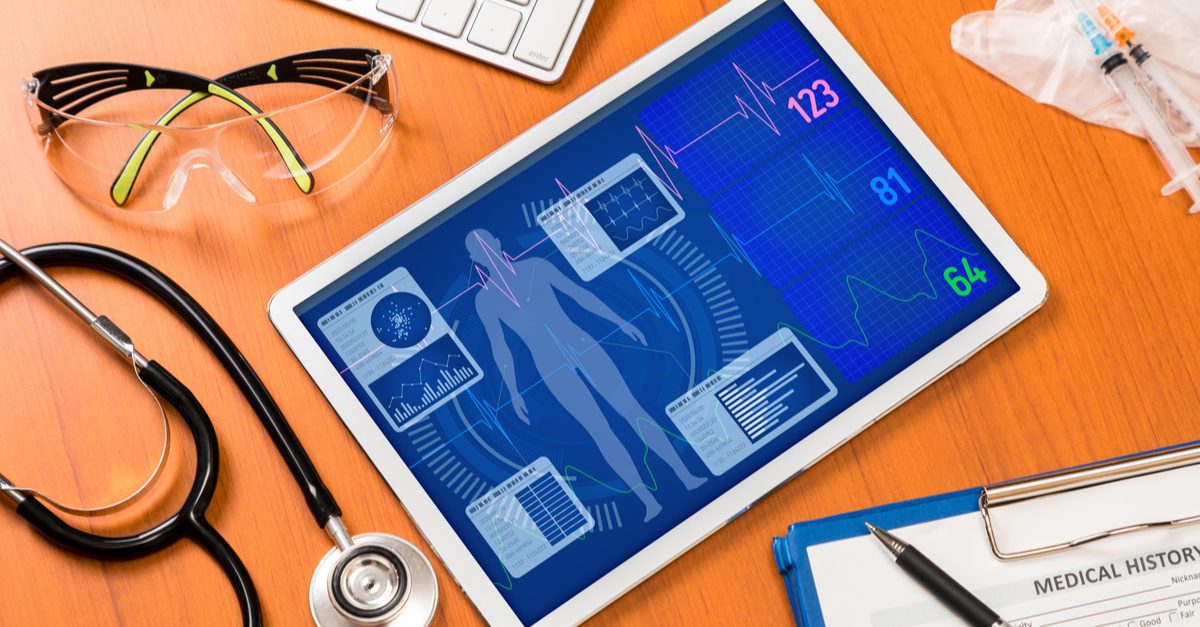Estimated reading time: 3 minutes
It’s projected that by 2020, 1 in 4 hospitals will have deployed robotics to aid with time-consuming tasks. Reducing such labor and preventing errors with procedures to promote overall sustainability within healthcare, is a top priority.  The adoption and evolution of Patient Monitoring Solutions and other cognitive technology solutions in large medical centers is a hot trend, observed by many. From chatbots, wearables, and other mobile health devices, these are just a few we can expect to see disrupting this industry for the better, and allowing patients to stay up-to-date on conditions and billing.
The adoption and evolution of Patient Monitoring Solutions and other cognitive technology solutions in large medical centers is a hot trend, observed by many. From chatbots, wearables, and other mobile health devices, these are just a few we can expect to see disrupting this industry for the better, and allowing patients to stay up-to-date on conditions and billing.
Chatbots as Patient Monitoring Solutions
Though the healthcare industry has not widely adopted the AI chatbots, that we’ve seen in every other industry, they will soon be a game changer with hospitals and General Practitioners.  Patients will be able to access to their medical charts and check on any outdated vaccinations, right in the palm of their hands. Patients will be able to schedule doctors’ appointments and consultations, without having to listen to that mundane voicemail message, over and over. Nurses can communicate with patients in real-time to update them on conditions and prescription dosage changes. Chatbots are open 24/7, so even if you couldn’t stop by your doctor’s office in between operational hours, chances are you can submit a question and have your answer in seconds.
Patients will be able to access to their medical charts and check on any outdated vaccinations, right in the palm of their hands. Patients will be able to schedule doctors’ appointments and consultations, without having to listen to that mundane voicemail message, over and over. Nurses can communicate with patients in real-time to update them on conditions and prescription dosage changes. Chatbots are open 24/7, so even if you couldn’t stop by your doctor’s office in between operational hours, chances are you can submit a question and have your answer in seconds.
Conversational User Interface
Refined Natural Language Processing (NLP) abilities can identify a speaker’s intention, and hospitals and practitioners are positioning it for widespread adoption. Tools and resources such as hands-free, voice-assistants can cut down on time spent doing tasks: searching through records, making phone calls, conducting data entry, and more. Such devices harbor smart learning capabilities as well. Through virtual cognitive behavioral therapy, this technology can embody a presence of anonymity, address patient anxieties, and neutralize the risks at hand.
Wearables as Patient Monitoring Solutions
 Without going to the doctor, a patient can check their blood pressure, heartbeat rate, and other health-related statistics. Automation in the healthcare industry, has made it possible to ship out feedback to patients on their current situation, including blood sugar levels, pulse rates, and even blood pressure readings. These updates can further increase due to the soaring death and fatal disease rates, to keep hospital staff in the know of their patients’ health. Wearables could potentially save lives.
Without going to the doctor, a patient can check their blood pressure, heartbeat rate, and other health-related statistics. Automation in the healthcare industry, has made it possible to ship out feedback to patients on their current situation, including blood sugar levels, pulse rates, and even blood pressure readings. These updates can further increase due to the soaring death and fatal disease rates, to keep hospital staff in the know of their patients’ health. Wearables could potentially save lives.
Mobile Health Devices & Remote Patient Monitoring Solutions
Mobile health devices have helped to bridge the gap between adopters and the early majority, to entrench themselves in the marketplace. Mobile is in, but registering as old news. Realistically, AI is here to stay. The ability to monitor vital signs and assess reactions to treatments, without the necessity of being in the same physical space as the patient. Individuals can be “seen” virtually in the comfort of their cozy, rural homes, or those who are bed-ridden and seeking care for their conditions. Video services are widely made available through various mobile devices, to help connect practitioners to the one in need.
Mobile RPM has made technology solutions more feasible for patients, providers, and health plans involved. Services are conveniently scheduled, for the patient at hand can be prompted to check in with their practitioner on a weekly basis, to stay more up-to-date. Clinicians can review patient-requested information with their patient, before that record gets added to the EHR. This offers higher quality monitoring of patient-requested data. This weighs in deep, more than any phone call, email, or text message check-in. All this requires is a decent internet connection to experience this live video encounter. This is highly useful for other use-cases such as: oncology, non-chronic cardiology, post-procedure and post-surgical monitoring.
Closing out
Remote Patient Monitoring Solutions have the potential to reduce chronic care costs. They’ve been projected to improve various clinical outcomes, by moving out of the healthcare environment and into people’s homes. Patient-generated health data is stored on small devices and mobile health platforms. That data can be collected and sent to patients, in real-time. Around the clock, patients can receive updates on health, exercise, diet, and physical environment around the clock, and on their on needs-based timing. As a whole, Remote Patient Monitoring systems can assist clinicians in better understanding the conditions of their patients and treating them in a better manner.

